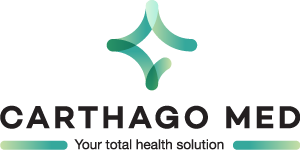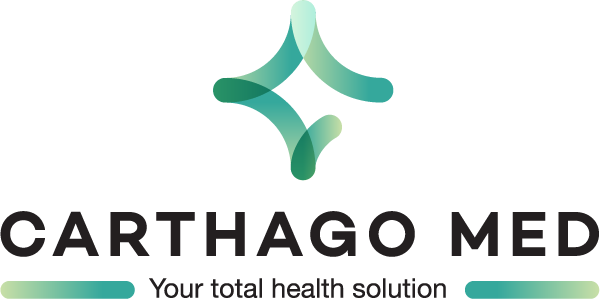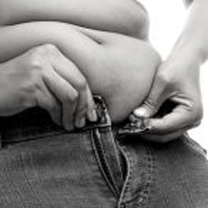Nissen Sleeve
A New Take on the Gastric Sleeve
The Nissen Sleeve is a surgical procedure that combines two procedures, the Gastrectomy Sleeve and the Nissen operation. Also known as the Nissen fundoplication, this procedure is designed to treat GERD (gastroesophageal reflux disease) and hiatal hernia.
The principle of the Nissen Sleeve
The Nissen technique was developed by Dr Nissen in the 1950s. The procedure consists of wrapping the abdominal part of the oesophagus with the upper part of the stomach (the fundus). By creating pressure on the oesophagus, it will be possible to stop the acid reflux.
This surgical procedure will therefore ensure that the inner sphincter of the oesophagus closes better and prevents food and stomach acid from flowing back up the oesophagus, causing burning and discomfort to the patient.
The operation also consists of treating a case of hiatal hernia: this is a phenomenon in which the upper part of the stomach slides towards the thorax, crossing the hiatal orifice of the diaphragm; hiatal hernia, if left untreated, can cause numerous complications of varying degrees of severity for the patient.
Nissen Sleeve : indications
In obese patients who suffer from gastro-oesophageal reflux, performing a sleeve gastrectomy often leads to an aggravation of the reflux, with the risk of developing severe oesophagitis (a strong inflammation of the lining of the oesophagus).
In the past, when an obese patient with reflux wanted to have bariatric surgery, he or she was offered a Y-bypass, a technique that has the dual advantage of treating the obesity and reducing the reflux. But today, for many reasons, obese patients with reflux are more likely to be offered a Nissen Sleeve instead of a bypass.
The Nissen Sleeve is still considered a new technique in bariatric surgery, but the results already obtained are quite satisfactory, and the technique can represent a good solution and a good alternative to bypass for some obese patients with reflux. The Nissen fundoplication can also be suggested when medical treatments have failed to remedy the patient's reflux. During the initial consultations, the surgeon will examine the patient and decide which surgical procedure is best for him or her.
Before a Nissen Sleeve operation
A surgical operation of this magnitude requires preparations to be made before you can go to the operating room. You will need to undergo a series of examinations and tests, including a full medical check-up and blood tests. Before the operation, a gastroscopy and an oesophageal manometry will also be necessary to check for gastro-oesophageal reflux. A meeting with the anaesthetist should also be scheduled before the operation.
Few weeks before the operation, you will need to stop smoking (and you will also need to give up smoking for a few weeks after the operation), as smoking may interfere with the healing process. You will also need to stop taking certain medicines, such as aspirin. Your surgeon will give you a list of preparations and do's and don'ts before your operation.
Nissen sleeve Procedure
The operation is performed under general anaesthesia, and lasts on average 120 minutes.
The operation is performed under laparoscopy. The surgeon will make incisions in the abdomen to reach the oesophagus and the stomach. These incisions are small, so the scars will be very discreet after the operation.
Using precise surgical techniques, the surgeon will manipulate the upper part of the stomach, which will surround the lower part of the stomach. This procedure will serve to create a kind of anti-reflux block.
In the same operation, the surgeon will perform a sleeve gastrectomy, which involves removing two-thirds of the stomach, leaving the patient with a tube-shaped stomach instead. The aim is to limit the amount of food consumed during meals, and therefore to lose weight in the long term. Once the operation is completed, the surgeon sutures the incisions with absorbable thread and a bandage is put in place. One to two days of hospitalization will be necessary to evaluate your condition and your recovery from the procedure.
Nissen Sleeve price
The price of a Nissen sleeve performed in the partner clinic is 4500 €. This all-inclusive price includes the costs of the bariatric surgery and the medical stay in the clinic and in the hotel (5 nights and 6 days)
The aftermath of a Nissen Sleeve
After your operation, it will be necessary to follow up with a multidisciplinary team. This follow-up will serve in particular to monitor your progress, to update your nutritional programme, to check that you are not suffering from dietary deficiencies and to evaluate your weight loss over the months.
You will need to adopt a new lifestyle and dietary discipline, as well as regular physical activity. Your discipline, willpower and new mindset will greatly influence the results of the operation.
As with any other surgery, complications cannot be ruled out, although they are rare.
Among the risks of a Nissen Sleeve: haemorrhage, fistula, pulmonary embolism, without forgetting the risks linked to the anaesthesia during procedure. It will be necessary to take the time to discuss the possible risks with your surgeon, before making the decision to have the operation.
You should also bear in mind that acid reflux may reoccur following Nissen Sleeve surgery, in which case you will need to take anti-acid medication and be under frequent endoscopic monitoring so that your specialist can check the progress of the acid reflux.
The results of the Nissen Sleeve
Unlike a Sleeve Gastrectomy, it is not yet possible to evaluate the results of the Nissen Sleeve in the long term, as it is still a very recent technique. However, the first data analysed throughout the world confirm that this procedure leads to a very satisfactory weight loss.
From the first months after the operation, as with sleeve gastrectomy, you can expect to lose up to 70% of your excess weight, provided of course that you scrupulously respect the instructions for your new lifestyle. The operation also effectively reduces episodes of gastric reflux.









